



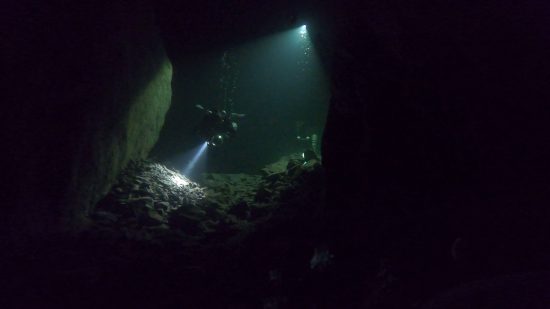
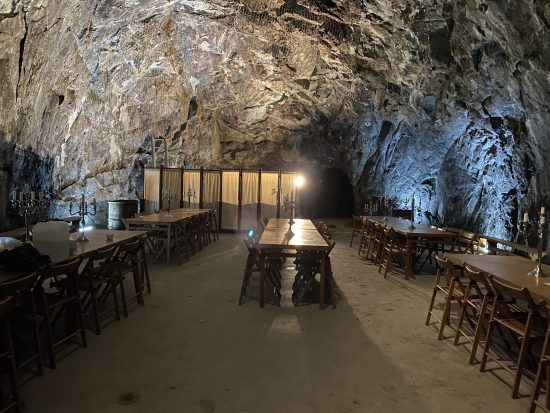
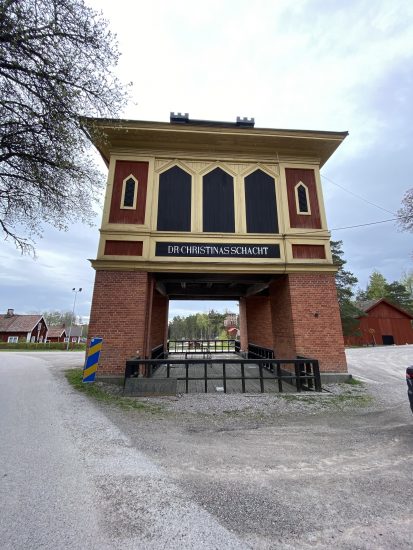
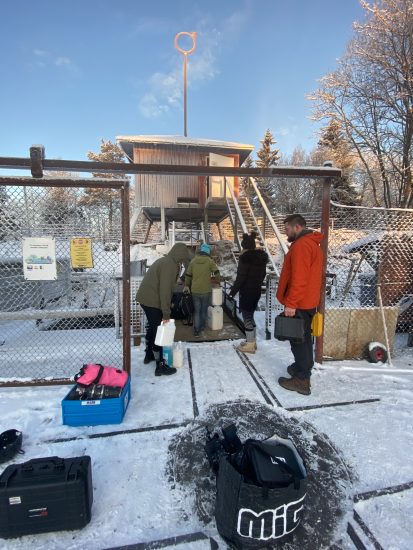
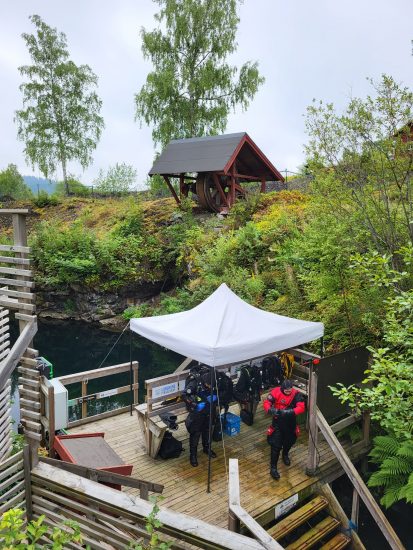
What comes to mind when you think of Sweden? Alexander Skarsgård? Zlatan Ibrahimovic? Or Ingmar Bergman and Alfred Nobel? But did you know that Sweden offers some of the best mine diving in the world?
Throughout the country, often mistaken for Switzerland, the forests of Sweden are littered with water filled holes that tell the tale of an industry which is dying but not forgotten.
It is easy to view Sweden as a peaceful country which has boasted lasting peace for over 300 years, but before that we were anything but. We fought the Danish, the Germans, the Polish and the Russians. This would not have been possible without the silver and iron provided from large scale mines, now between 300-500 years old.
While we did not actively participate in WW1 or WW2, our iron was sought after, and we sold both iron and ball bearings to both sides. With our iron, warships were built, and our ball bearings catapulted the development of canon towers and artillery.
Funds for war were not the only thing that the mines resulted in, however. Now, they are a destination for divers, geologists and adventurers!
Sala Silvermine, the kings treasure trove, was active between 1500-1900, supplying funds for many wars. It was custom for the members of the Swedish royal family to visit and leave their royal seal on the walls. The mine runs deep with tunnels stretching between the different shafts named after members of the royal family. The water is cool, 2°C, and is constantly being pumped out to keep it at bay. This means the diving level starts 155 meters below surface level, and for those who don’t dive, there is a big dry area that can be explored. As you dive into the tunnels, you can hear the pumps beating rhythmically, almost like a heartbeat, the heart of the silver mountain.
Tuna-Hästberg, the iron mountain of Bergslagen, 500 meters deep at the end of its life, hosts both open water areas as well spectacular open dry rooms and smaller tunnels where trains and wagons would run. The diving level starts at 80 meters below the surface, and for dry cavers the levels above the surface show similar structures to below the surface. Next to an underground lake where open water divers can get their first taste of what mine diving can be, there is also a huge sauna to enjoy and swimming opportunities in the refreshing 4°C water. The lake is so still and clear that it’s hard to even see where the surface begins!
Under the surface, there are abandoned mine carts, tree constructions and bridges where workers would stroll as well as leftover equipment. The cart tunnels are small and cosy, where the remnants of a railway can be seen and often lead into huge open rooms.
Långban, the man-made cenote of Värmland with tunnels running like the holes of swiss-cheese, is a geologist's dream. The veins were created to follow several different ore veins at the same time, and it’s one of the oldest mines we have, but it did not start out as one single mine. First, it consisted of 3 smaller mines, all run by different owners, but in the end they were united by John Ericsson who joined the 3 mines into one.
Långban mine is also one of the world’s most mineral abundant places, with over 270 minerals registered! It's a geologist’s fantasy, with unique fauna growing around the holes left from the mining. During the summer, the sun beams cut into the open pools just like the cenotes of Mexico, only its 6°C in the water all year around, making it the warmest mine with great visibility.
These examples of mines are run by volunteering organizations, by divers for divers, based on the passion of the diving community to share the archaeological environments of the mines. In the past, within every mine, there was hard work being done, workers and animals who died, cave ins and superstitions.
One of the most common superstitions is the Gruvfru, translated to either the Minewife or Lady of the Mine. Workers believed that she lived within the mines and if she was in a good mood, she would show you the best veins and favour you. But she could also be an omen, warning a worker of an impending cave-in or even leading them astray from the best veins. Whistling, swearing, shouting or spitting inside the mine was not allowed as it was believed that it would anger the Lady of the Mine. Instead, you would knock on the mine 3 times before you entered and hope she was in a good mood, hoping for her protection during work.
So, Swedish mine diving. What's the deal? While its not uncommon to be deterred by the cold, the dark and the technical challenges diving overhead in a cold environment pose, the ones who put in the time and effort find it rewarding and get to see and visit places few experience.
Within the mines is also an important chapter of our industrial history, part of our superstition and mythology, the reason for our success, a snapshot in time. They remain like the day the last worker took a look around and closed the door.
Why not come and experience them yourself?
 Sara Banderby
Sara Banderby 3rd April 2023
3rd April 2023